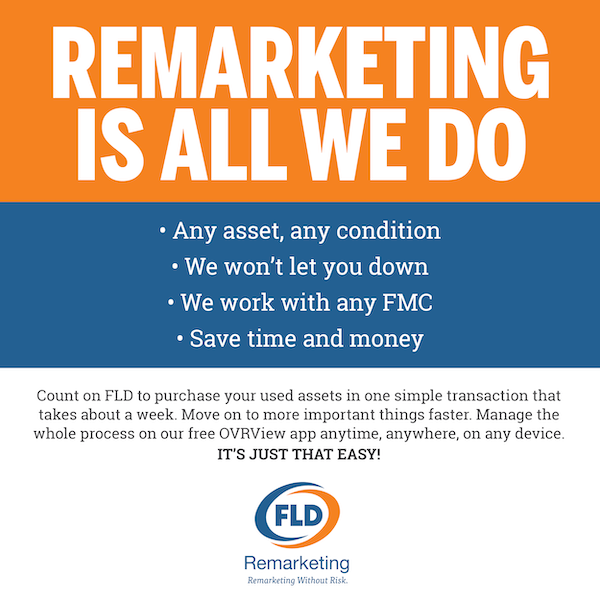
By Rose Morrison, Managing Editor, Renovated.com
December 30, 2021
Fleet management technology is rapidly helping companies differentiate in a crowded marketplace. There are many factors outside their immediate control, but choosing the right technologies can help operations remain profitable and productive.
Fleet management tech is becoming more accessible, too. Here are five possibilities likely to make an impact in 2022.
1. Fleet Electrification
As world leaders continue making ambitious climate- and emissions-related goals, fleet managers are under more pressure to at least strongly consider transitioning to an electric fleet. Tim Baughman is the Ford Pro North America general manager. He recently delivered a keynote speech about electrification that offered numerous takeaways for fleet management professionals.
“We are reaching a major inflection point. Nearly every industry, from construction to telecom, is facing a change when it comes to electrification. At Ford, we believe electrification will make a profound difference in a company’s profitability. The ones at the forefront will have the advantage over the others,” he said.
Baughman also warned, “Companies need to start thinking about electrification now because some are turning 10-15% of their fleets over every year.” He also confirmed that cost planning must go into those preparations, noting, “Electric rates vary, and it depends on when you charge, how fast you charge, where you charge, and how much you charge. If you don’t manage your costs correctly, you’re going to see bills that are two to three times the normal price of diesel.”
2. Digital Supply Chain Technology
Supply chain issues are constant concerns, but some experts warn the issues are reaching even greater heights, particularly due to things like driver shortages, port backups, and limited quantities of in-demand goods.
Digitizing the supply chain won’t solve all those issues for fleet managers, but it could ease them. Tim Meadows is the managing director of r2c Online, which provides fleet management software. He explained why supply chain shortages become more manageable thanks to the increased visibility digital technology can give.
“The problems are not insurmountable if all your supply chain is linked and you have a long-term strategy in place. This means taking a close look at every part of your operation that could be affected by the shortages and understanding where any time and efficiency improvements could be made,” he said.
Meadows added, “Digitization of the entire supply chain, from road to workshop, can help because it can show where there are potential problem areas more quickly, and also provide solutions.”
3. 3D Printing
3D printing has caused tremendous improvements for creating everything from prosthetic limbs to homes. In one example, a laboratory created an excavator with the stick, heat exchanger, and cab made via 3D printing.
A pilot project is already underway to assess the feasibility of a similar process for sourcing spare bus parts. More specifically, Daimler Buses and Omniplus set up a printing facility inside a portable container that gets transported by truck to the necessary locations and supplies components for Mercedes-Benz and Setra vehicles.
Bernd Mack, the head of customer services and parts at Daimler Buses, explained, “Thanks to the mobile 3D printing center, we can exploit the advantages of 3D printing to a greater extent and further increase the speed at which we supply spare parts. Decentralized production of parts as required avoids warehousing costs and reduces transportation routes.”
He continued, “Thus, 3D printing not only allows us to react fast, flexibly, and economically to customer requirements, but to also improve our ecological footprint for the production of spare parts.”
4. Hybrid Working Solutions
The COVID-19 pandemic caused many people, including some fleet managers, to work from home for the first time. Some experts assert that people should get equipped for hybrid working arrangements.
Now that the pandemic is more in control in some parts of the world, workers are heading back to the office. However, others will opt to stay home for the foreseeable future, especially if doing so keeps their productivity high.
In 2020, Peter Golding, the managing director of FleetCheck, expressed his expectations for a more long-term trend of remote working for fleet managers. He clarified, “The exact extent of this is impossible to predict at the moment, but even a relatively small shift will have very definite implications for how fleet management is approached generally. It is likely to remain, as it has become in certain weeks, a much more remote activity than in the past.”
Things like cloud-based interfaces that show where fleet vehicles are at any time, or time-tracking apps that help people confirm their time on the clock, are a couple of useful tech tools for such cases. They could help fleet managers smoothly adjust to a remote working scenario.
5. Driver Monitoring Systems
Many commercial fleets already have smart sensors that alert people to temperature abnormalities, gas mileage statistics, the amount of idle time versus minutes in motion, and other useful information. Those will remain prominent in 2022. However, there’s also a growing focus on driver monitoring systems that could keep trucking professionals and everyone they share the road with safer.
Experts believe driver monitoring systems will become standard safety features as early as 2023. However, fleet managers who are especially safety-oriented will likely start using them in the coming year or at least implement the technology in limited trials.
It’s also likely that such systems would integrate with existing advanced driver assistance technologies. Consider if a driver monitoring system detects that the person behind the wheel is sleepy, intoxicated, or otherwise in an unsafe state. Then, driver assistance tech might activate to help the vehicle operator stay in the correct lane or avoid a fender bender until they pull off the road safely.
Fleet Management Technology Streamlines Workflows
Fleet management roles can be challenging, especially since there’s so much to oversee at once. Technology can’t make everything go smoothly all the time. However, the examples here and others like them highlight the vital role that advanced technology can play in supporting trouble-free operations.
About the author
 Rose Morrison is the managing editor of Renovated.com and has been writing about the construction industry for over five years. Her favorite topics to write about are sustainable building innovations and cutting-edge construction technology. For more from Rose, you can follow her on Twitter.
Rose Morrison is the managing editor of Renovated.com and has been writing about the construction industry for over five years. Her favorite topics to write about are sustainable building innovations and cutting-edge construction technology. For more from Rose, you can follow her on Twitter.




